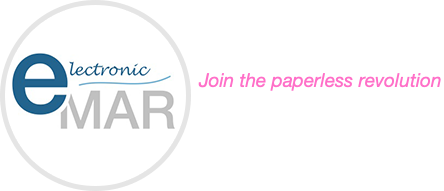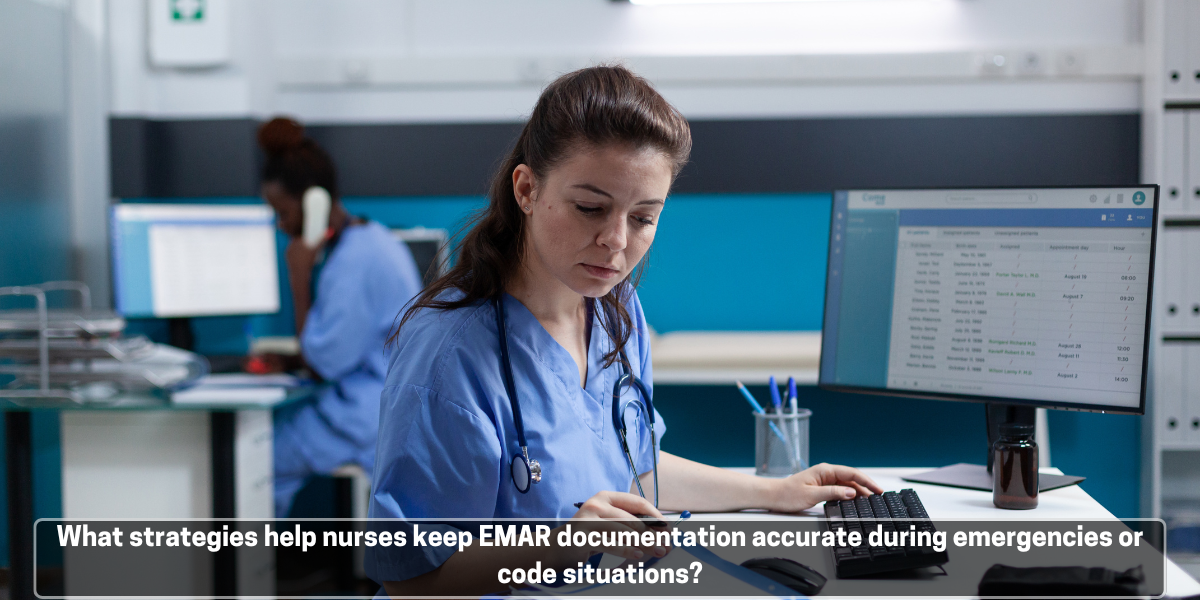Emergencies and code situations in the medical field are intense, fast-moving events that test every nurse’s skills and composure. Amidst the urgency to stabilise patients and save lives, it is crucial to maintain accurate and timely documentation in an eMAR nursing chart.
Accurate eMAR documentation during emergencies not only supports continuity of care but also ensures legal compliance. It helps the care team understand what interventions have been administered. Here, we will explore some practical strategies nurses can implement to keep eMAR records precise, even in the most high-pressure moments.
- Prioritisation of critical information
In the chaos of an emergency, it is essential to focus on the core medication details first. Nurses should promptly record the drug name, dosage, administration time, and route (oral, intravenous, etc.) in the eMAR system. This information is the foundation of safe medication management and provides other team members with immediate clarity on what treatment has been delivered.
- The use of delegation and teamwork effectively
To ensure no details slip through the cracks, nurses should assign specific documentation roles within the team during a code situation. One might focus solely on medication administration while another documents doses and times in the eMAR. This division of labour lets each team member concentrate on their task without becoming overwhelmed.
Clear and open communication is vital. Teams should verbalise what medication is being given and confirm the doses to prevent misunderstandings. The nurse who documents in the eMAR can ask questions or seek clarification immediately to ensure the records reflect exactly what occurred.
- Balancing speed with accuracy
The pressure to act swiftly can sometimes lead nurses to rush documentation or make incomplete notes. However, it’s crucial to balance speed with accuracy. Nurses should aim for concise but comprehensive entries that clearly communicate what was done without unnecessary detail that could delay documentation. An effective approach is to use standardised phrases or codes where appropriate, combined with brief comments. These highlight any unusual circumstances or reactions observed during administration. The method keeps records clear and useful, even when time is limited.
- Post-emergency review and audit
After the emergency has been managed, nurses and the staff should take time to review the eMAR entries promptly. This review allows them to identify and correct any errors or gaps in the documentation while the details are fresh. It also ensures the patient’s records are complete for future reference and audit purposes. Incident reports and regular audits of eMAR data following emergencies can uncover patterns or recurring issues and offer valuable learning opportunities.
Accurate eMAR nursing chart documentation during emergencies requires solid preparation, clear communication, and effective teamwork. Nurses must focus on key details—such as timing, dosage, and patient response—while ensuring no essential step is missed. In urgent situations, the ability to update the eMAR nursing chart quickly and correctly supports patient safety and care continuity. Regular eMAR chart training helps nurses with the skills and confidence needed to respond under pressure. By following clear protocols and using their training, nurses build a culture of safety, professionalism, and accuracy, even in fast-paced and challenging clinical environments.







